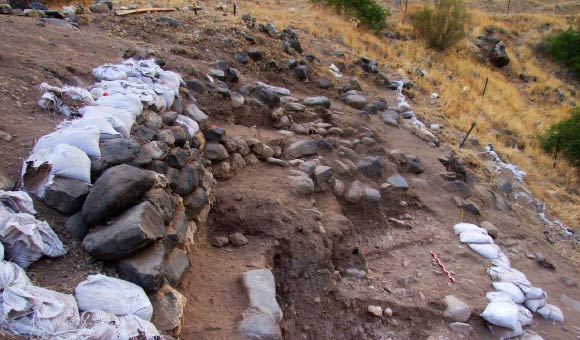Breakthrough Discovery: Ancient DNA Extracted from 2,900-Year-Old Clay Brick in Kalhu (Nimrud)
In a groundbreaking achievement, researchers hailing from the University of Oxford have successfully extracted ancient DNA from a clay brick dating back 2,900 years, originating from the ancient city of Kalhu, also known as Nimrud.
Kalhu, an illustrious Assyrian city nestled in Iraq’s Nineveh Governorate, once sprawled across 890 acres and rose to prominence as the capital of the Neo-Assyrian Empire during the reign of Ashurnasirpal II (883–859 BC).
Ashurnasirpal II played a pivotal role in reviving the city after a period of decline during the Bronze Age Collapse of the mid-11th to mid-10th centuries BC. Under his rule, a grand palace and numerous temples graced the city’s landscape, with inscriptions providing valuable insights into Kalhu’s resurgence. One inscription, in particular, vividly describes Ashurnasirpal II’s palace, constructed from an array of woods like cedar, cypress, juniper, and more.
Remarkably, from a clay brick crafted during this era, scientists at the University of Oxford have managed to extract and sequence ancient DNA, employing an innovative aDNA analysis method.
Their research unveiled an astonishing 34 distinct plant groups within the ancient DNA. Prominent among these were Brassicaceae (cabbage) and Ericaceae (heather). Other represented plant families encompassed Betulaceae (birch), Lauraceae (laurels), Selineae (umbellifiers), and Triticeae (cultivated grasses).
This interdisciplinary endeavor, spearheaded by a team comprising assyriologists, archaeologists, biologists, and geneticists, enabled the integration of their findings with contemporary botanical data from Iraq and historical Assyrian depictions of plants.
The clay used to fashion the brick likely sourced its composition from the nearby Tigris River, possibly incorporating materials like chaff, straw, or even animal dung. Following the molding of the brick, cuneiform writing was inscribed upon it, after which it was left to naturally dry under the sun. This unique approach of eschewing firing contributed to the preservation of the genetic material ensconced within the clay.
Dr. Troels Arbøll of the University of Oxford enthused, “Because of the inscription on the brick, we can pinpoint the clay to a specific time period in a particular region, essentially transforming the brick into a biodiversity time capsule that offers invaluable insights into a single site and its environs. In this instance, it offers researchers an unparalleled window into the world of the ancient Assyrians.




